Heritage Homes
Heritage homes in Winnipeg’s Armstrong’s Point open their doors to the public in a Heritage Home tour
The history inherent in hundred-year-old houses tells us things about the time period in which the home was built as well as something about the intervening years, when the houses were modified and adapted to meet the needs of the residents. Restoring hundred-year-old houses requires a respect for that history, a love of the past, and a lot of labour. This past weekend I got a glimpse into that history, respect, and labour at the Armstrong’s Point Heritage House tour in Winnipeg, Manitoba.
Armstrong’s Point is a small peninsula jutting into the Assiniboine River near the centre of the city. The land was granted by the Hudson’s Bay Company to Captain Joseph Hill in the mid-1800s. Hill returned to England five years later and left his batman James Armstrong in charge and the area became known as Armstrong’s Point. Today, 73 of the 112 houses on the point are listed by the City of Winnipeg as Historically Noteworthy.
This house was originally constructed in 1904 on Furby Street and moved to Armstrong’s Point in 1929. The house had a varied history and has served as a family home, a rooming house, and a disco-era party headquarters. The current owners bought it in 2002 and claim to have found it in a sorry state. They have spent the last 12 years renovating and restoring.
A diagram of the house in the Provincial Archives showed it once had a wrap-around porch. The current owners replaced the porch, but choose not to extend it as far as it had been originally because they didn’t want to cover the front bow window.
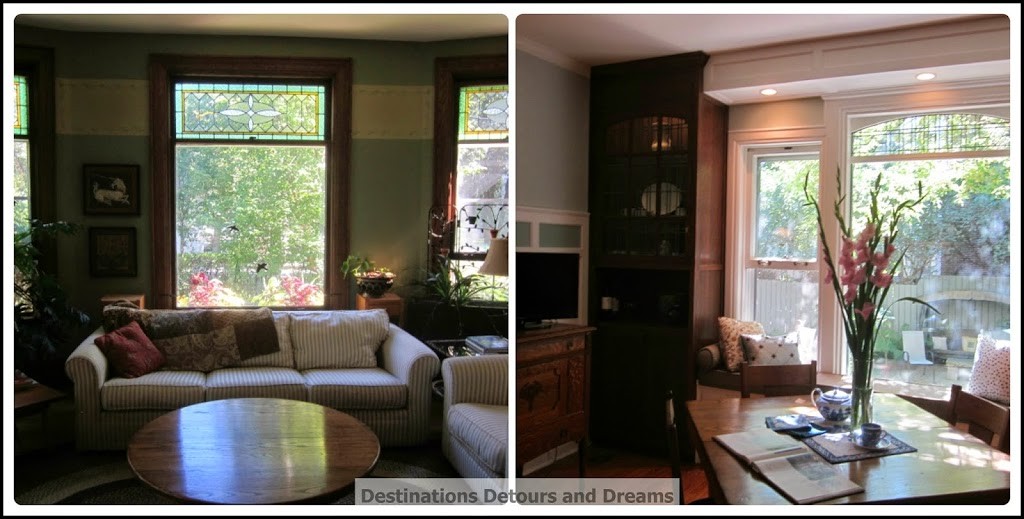
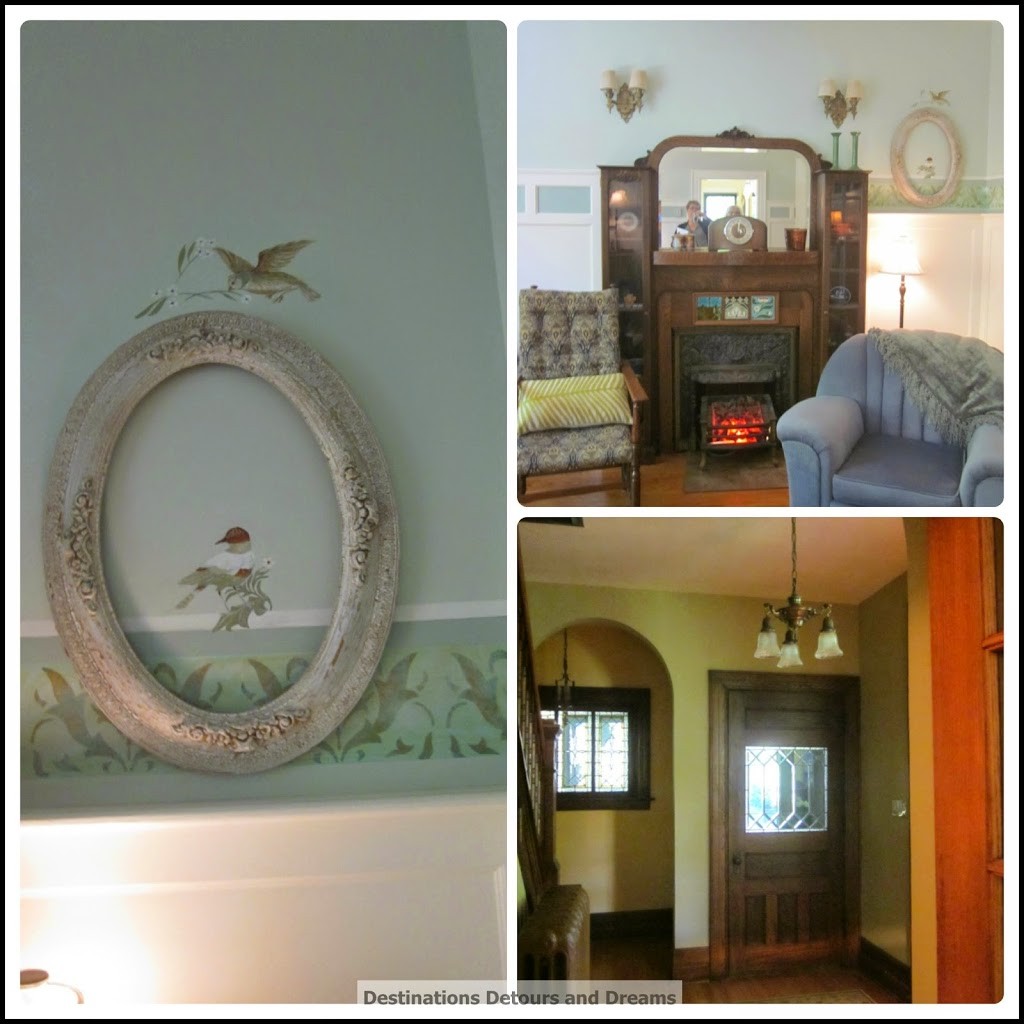
Many of the walls contain stencils done by the current owner. The stencils were adapted from designs by William Morris and M.P. Verneuil, popular at the time the house was built. A fir fireplace mantel found in the upstairs of the house and painted pink was refinished and moved into the dining room, along with an electric fireplace and wall sconces found in other parts of the house. The only light fixture original to the house is in the alcove by the stairwell. All other fixtures were purchased at architectural auctions.
This house was built in 1913. By 1956, it had become the residence of six families and two boarders. This was five more families than allowed by the Winnipeg City Code. The owners tried to convert the house to a triplex, but the plan was opposed by the Armstrong’s Point Association on the grounds it was an ad hoc project and needed an architect’s input. For forty years until the current owner purchased the home in 2001, it was owned by the Oblate Fathers and had evolved into an office building.
The new owners removed indoor/outdoor carpets glued to the floor and refinished the flooring underneath. They scraped layers of wallpaper from the walls. In the first 8 months, they hauled 25 half ton loads to the dump. The loads included plaster from ceilings that collapsed, carpeting, 6 sinks, what they called “unfortunate carpentry”, volunteer trees, and plastic plants.
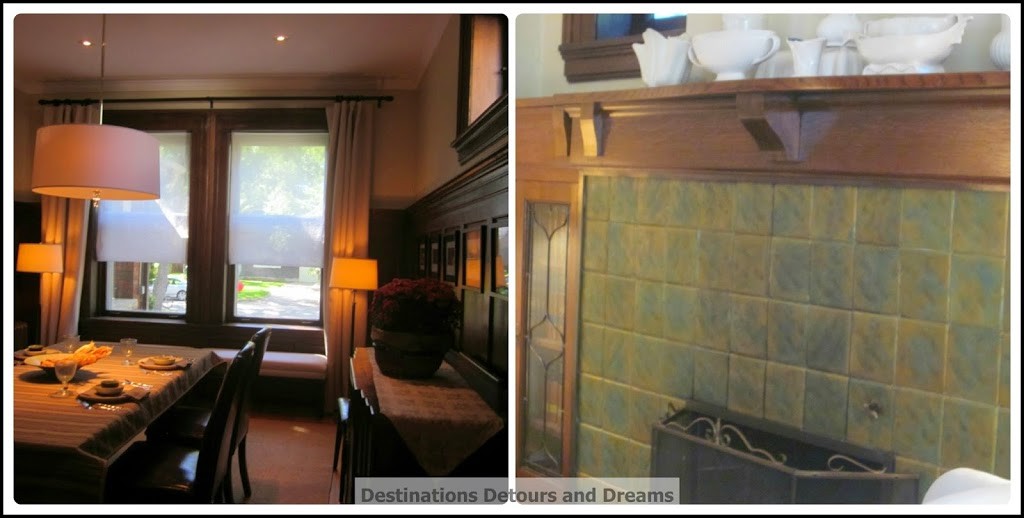
Ralph Connor House was built in 1914 in the Jacobethean Revival style. Ralph Connor was the pen name of Charles Gordon, who wrote 24 novels, mostly adventure stories set in the Canadian pioneer wilderness. His books include Black Rock, Sky Pilot, and The Man From Glengarry. After his death, the house reverted back to the city due to unpaid taxes. The University Womens Club of Winnipeg owned it for a while. It is now owned by the Friends of Ralph Connor House and used as a meeting place for promoting education, social justice, and healthy communities.
This house, in Tudor Revival style, was built in 1912 for David Horn, a chief grain inspector, for a cost of $15,000. It included a billiards room on the third floor. The house was duplexed in the 1950s. Purchasers in the 1980s restored it to a single-family dwelling.
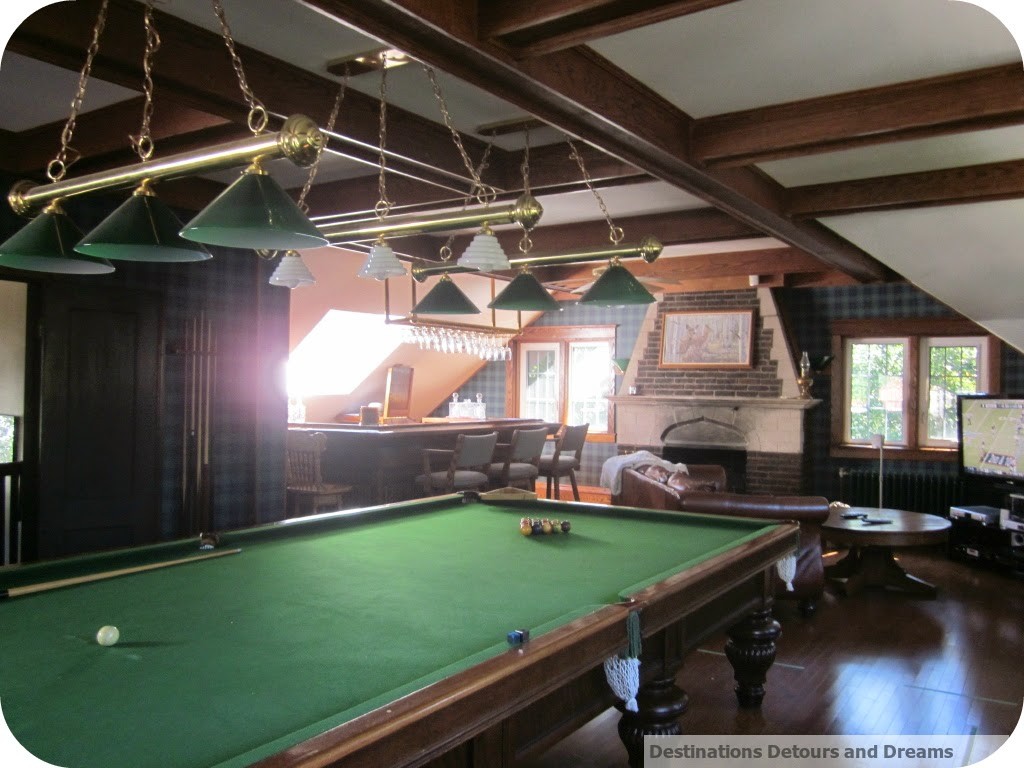
Construction on this house on Eastgate began in 1894 but did not complete until 1896 because the contractor had overextended himself. The current owners bought the house 17 years ago. They say they had pigeons for roommates on the second floor when they moved in and the wrap-around verandah, which had been added in 1920, was falling down. Among other renovations, the owners rebuilt and extended the verandah, turning it into a four-season sun room on two levels.
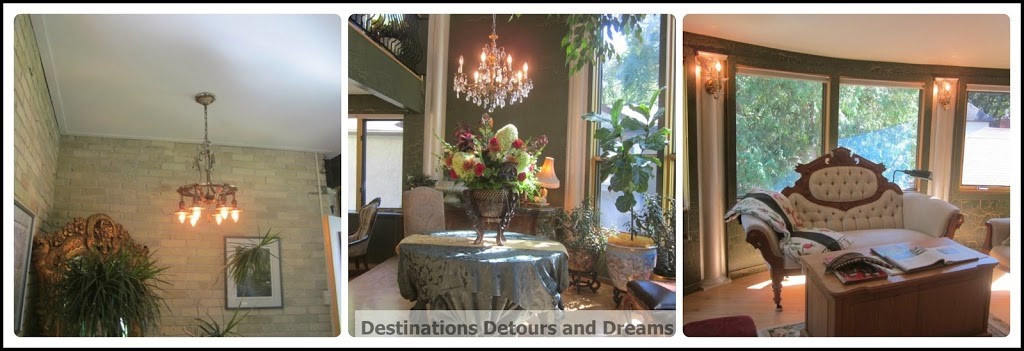
The house at 146 West Gate was built in 1919-1920 by R.T.Riley, founder of Canadian Indemnity and other businesses. Today the house operates as a bed and breakfast: River Gate Inn. The exterior of the house was used in the filming of Home Alone: The Holiday Heist.
The house at 5 East Gate was originally built in 1906 for Thomas Ryan, a pioneer boot and shoe merchant, for a cost of $18,000. Ryan’s fortune was short-lived and he lost all his business properties and this house in 1916. The tour did not provide much information on the history of the house since then,but mention was made of it being used as a nursing home at one time. When I did the tour in 2014, it had also been operating as a bed and breakfast.
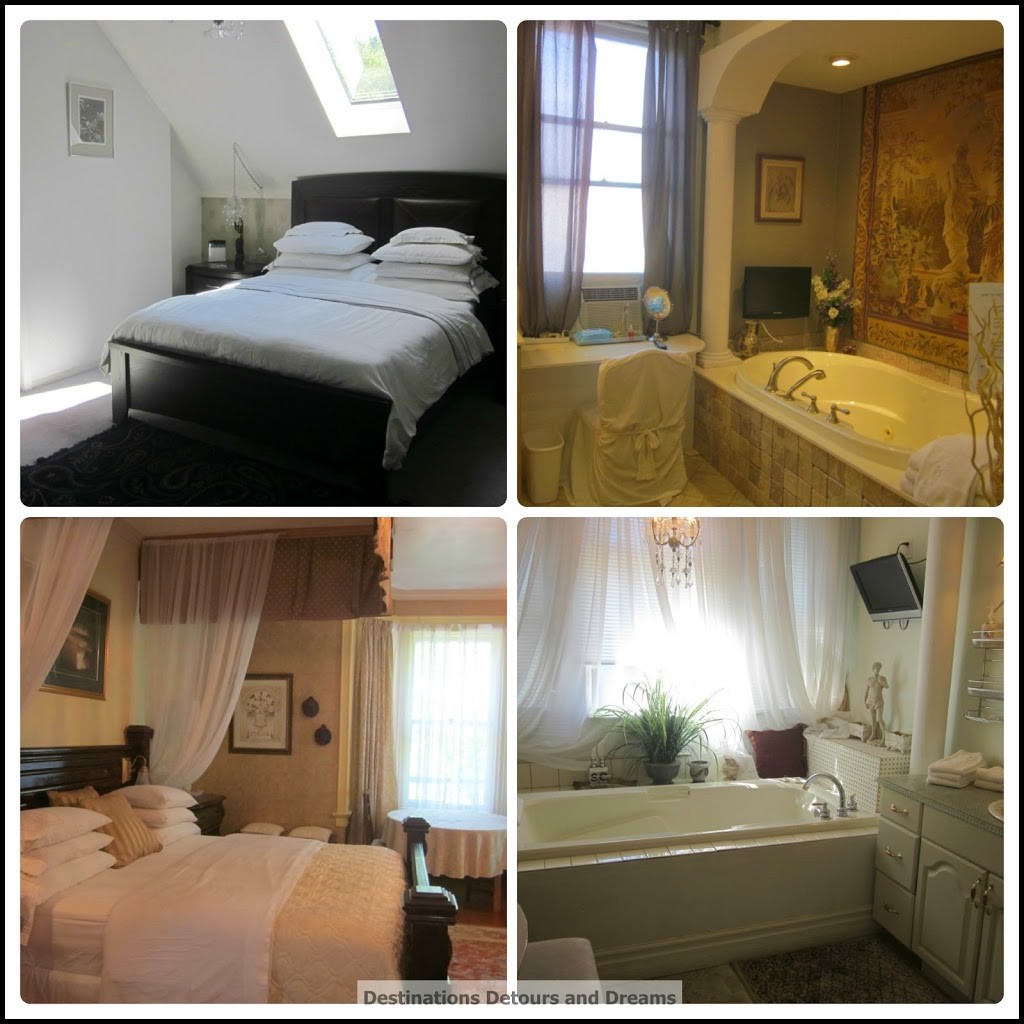
you can see from the sample of rooms that the bedrooms and bathrooms offer modern comforts to guests.
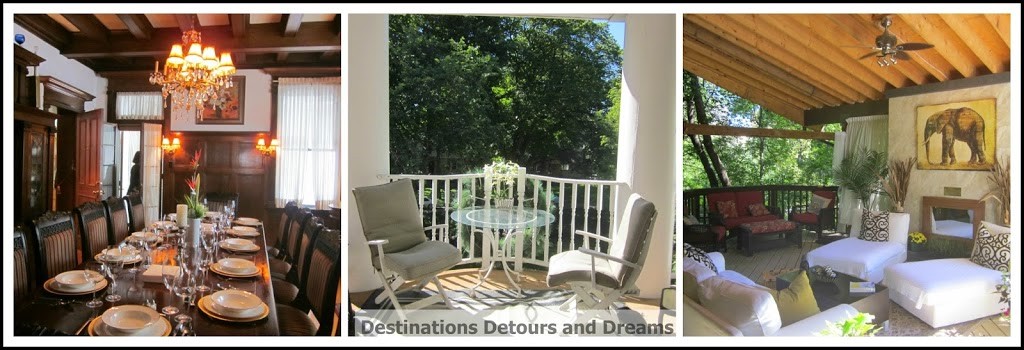
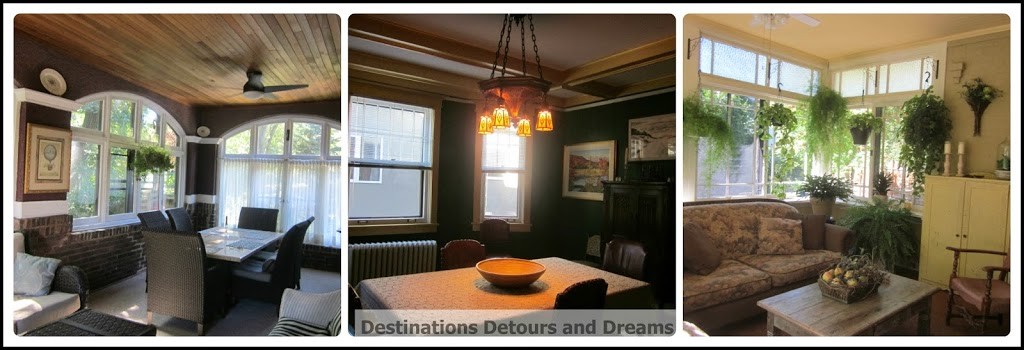
One owner said what they bought 13 years ago was not a house, but a project and although renovations have slowed down now they will likely continue long after the house is passed on to the next family. After 12 years of restoration another owner says the things they worked on first are now in need of work again and claims the house will never be “finished”. A third owner calls their house a work in progress, after 17 years of renovation. I feel privileged to have been able to seen the fruits of their labours of love.
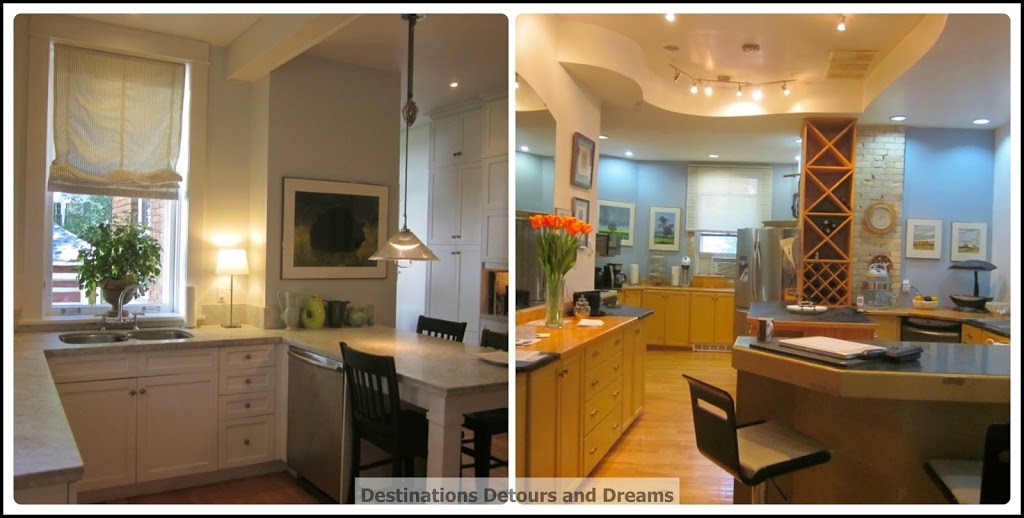
In 1955, the Armstrong’s Point Association was formed to “preserve the residential nature” of the neighbourhood. The area remains peaceful, shaded with natural beauty. It is hard to believe the city is just steps away. Several gardens were also part of the Heritage Home Tour.
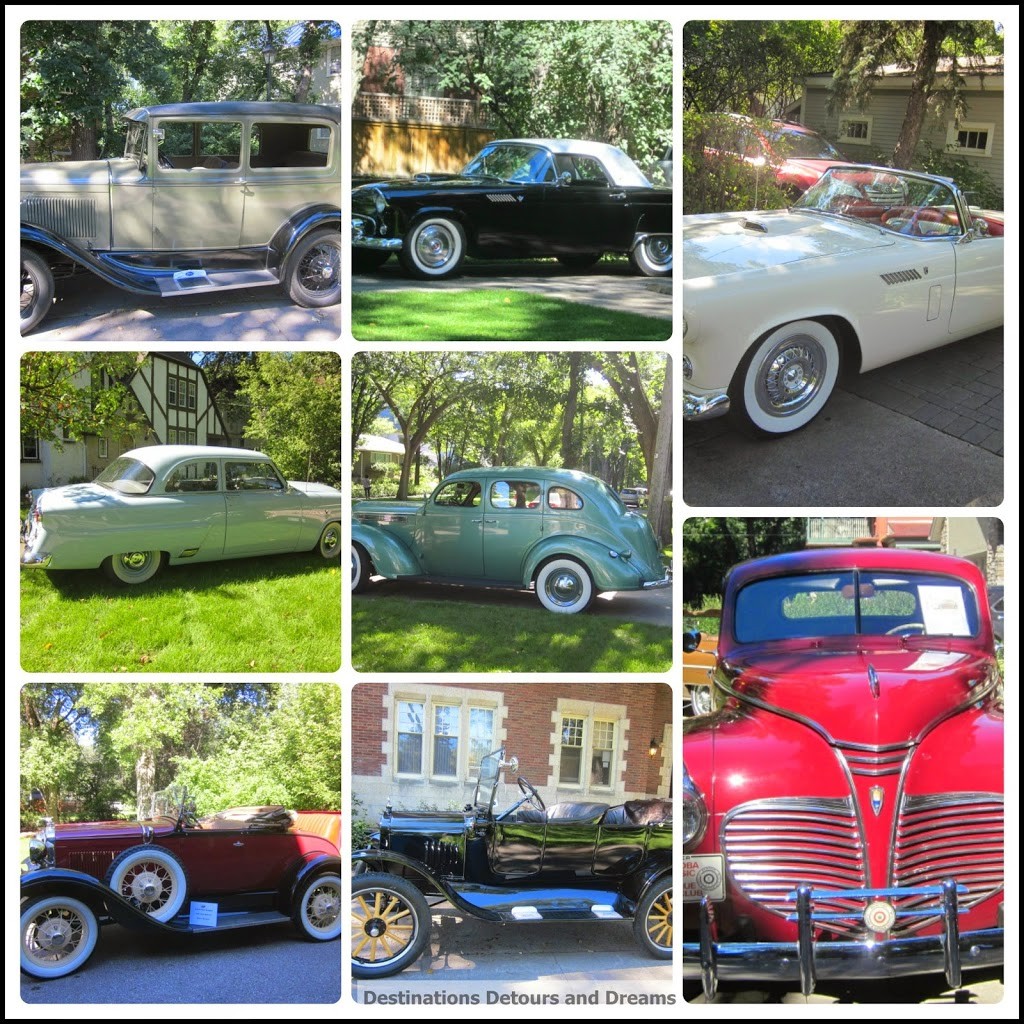
Do you have a favourite heritage home or home tour?

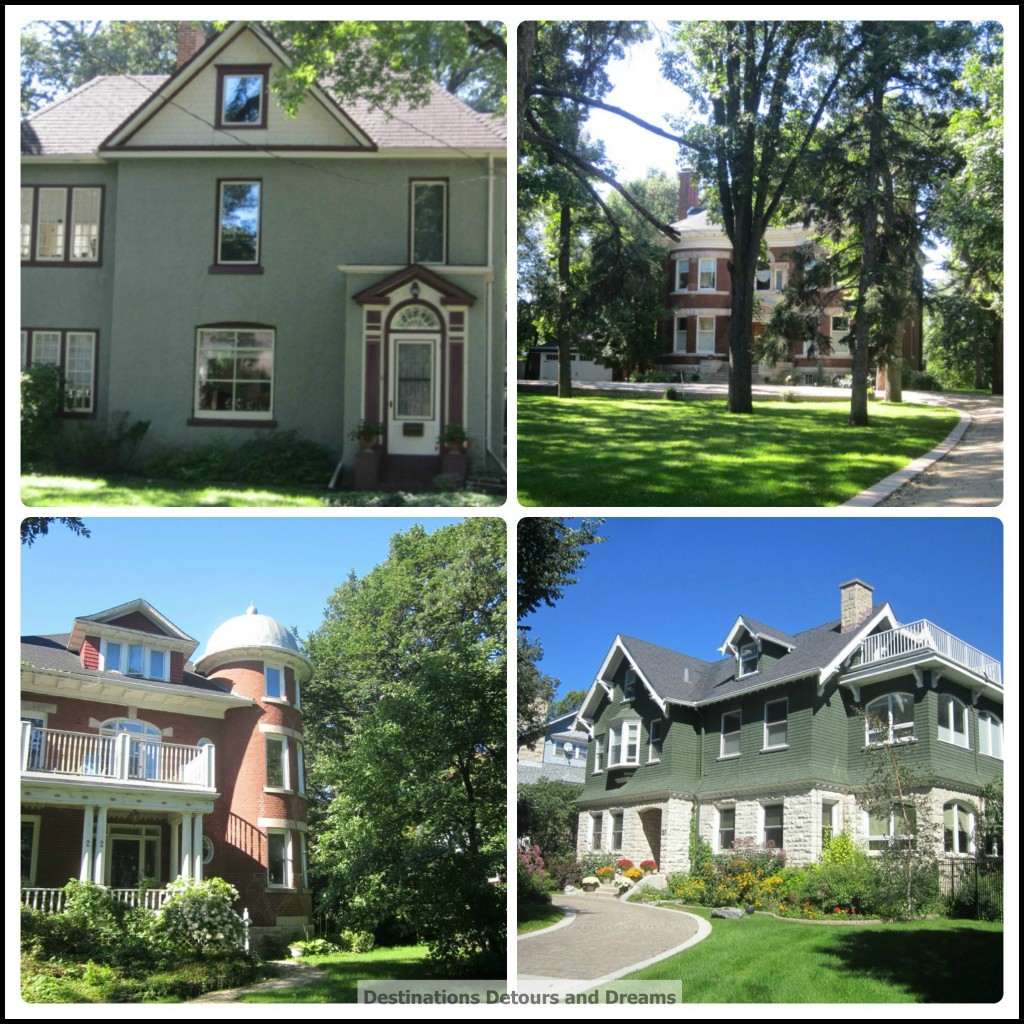
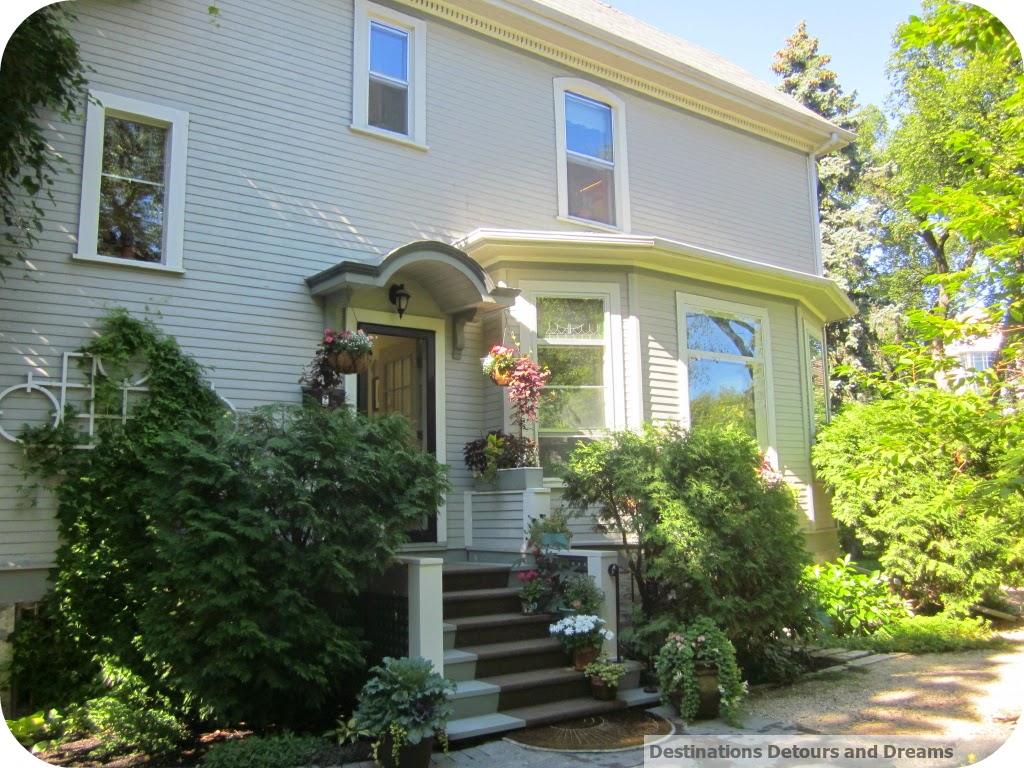
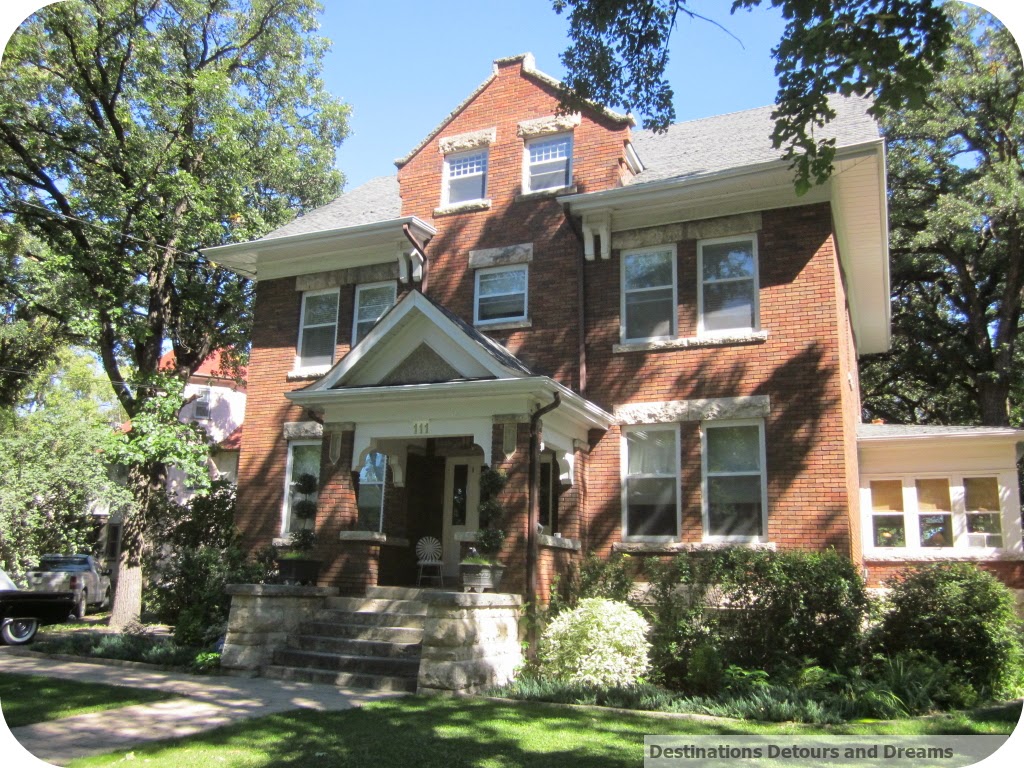
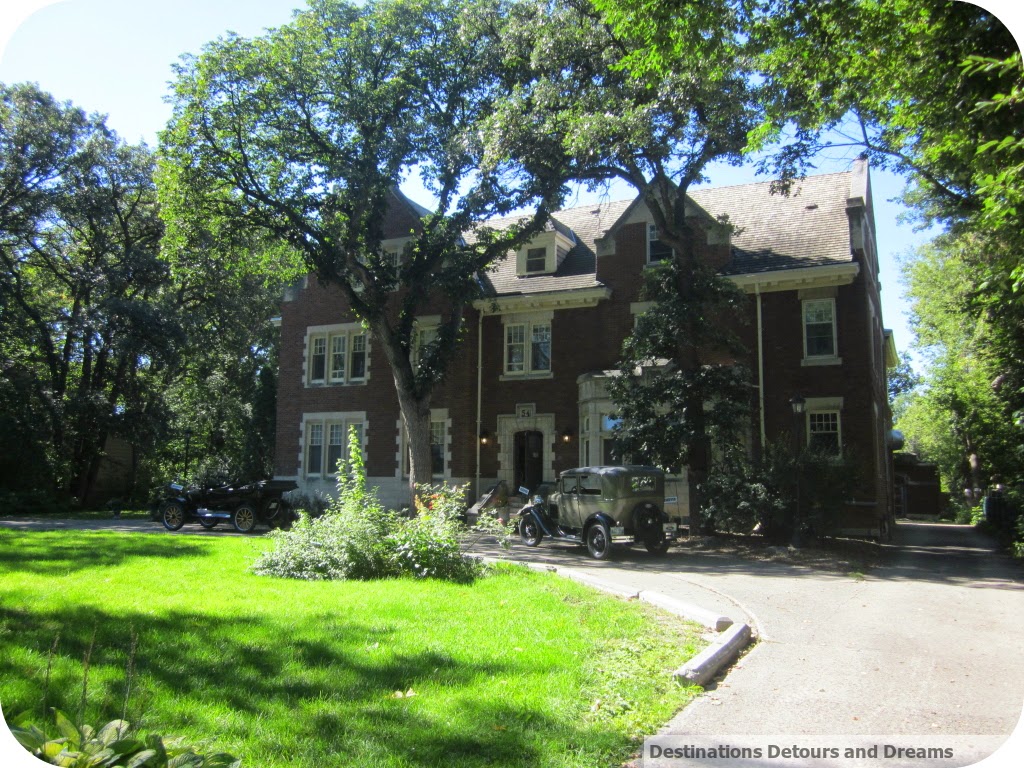
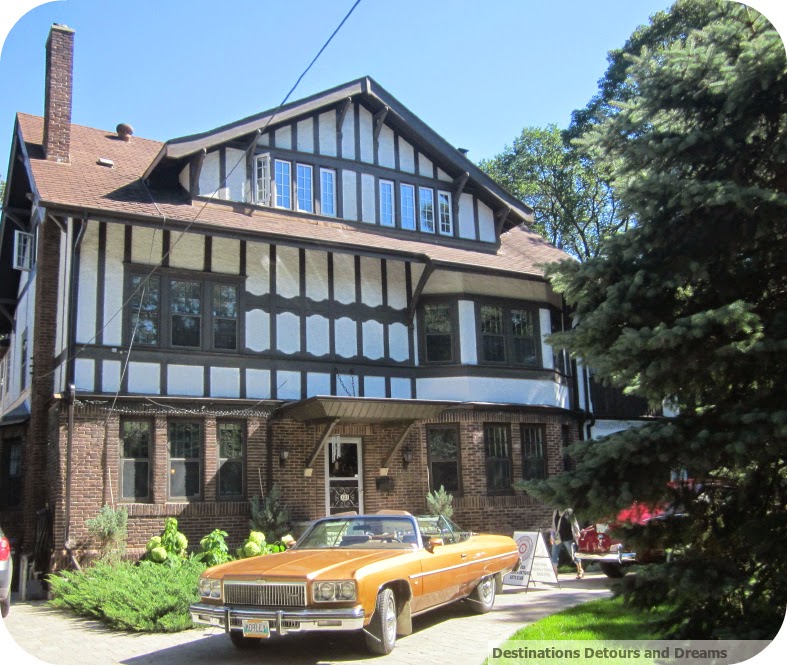
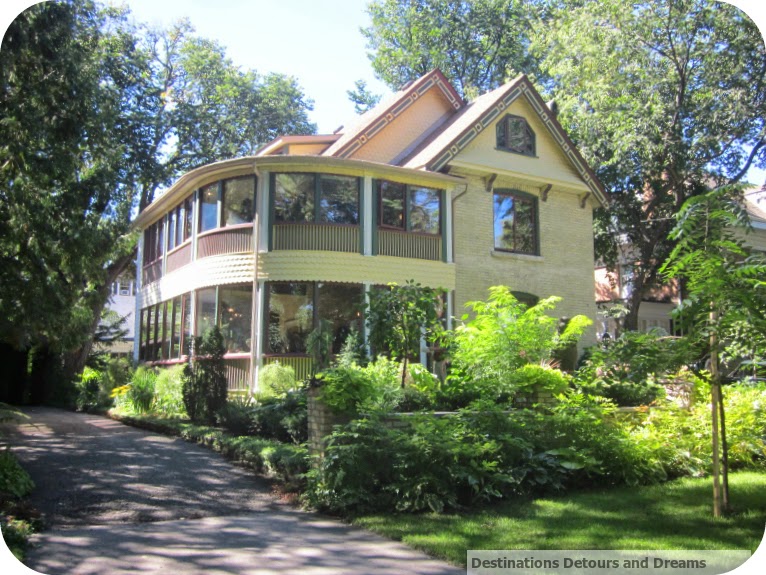
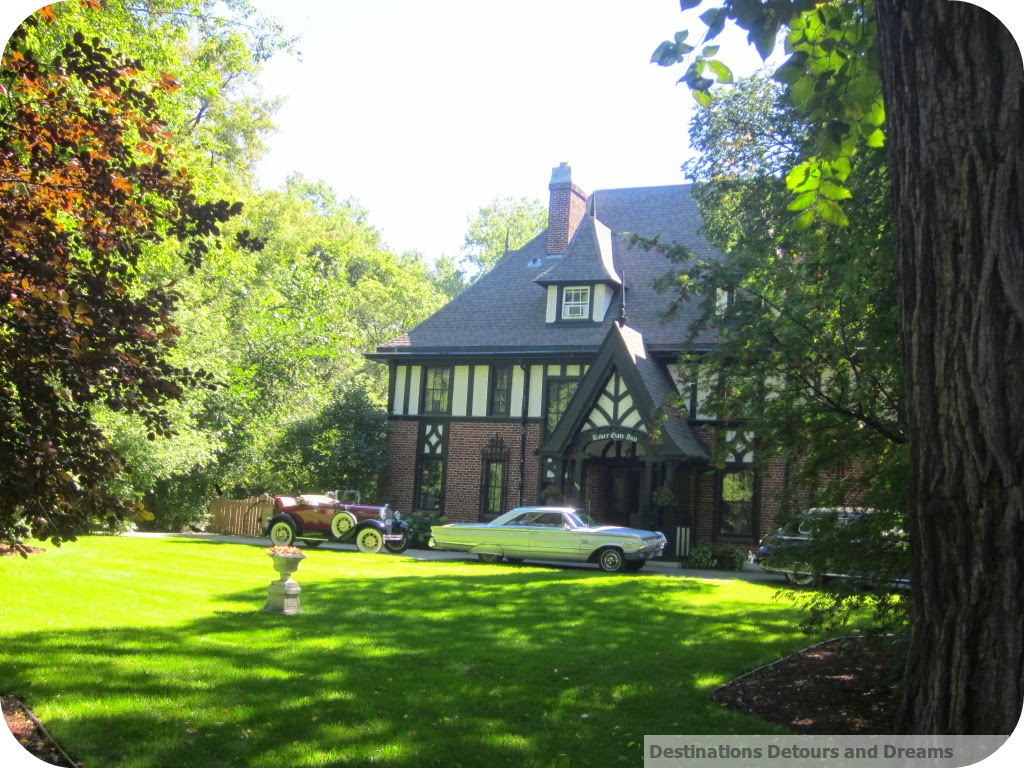
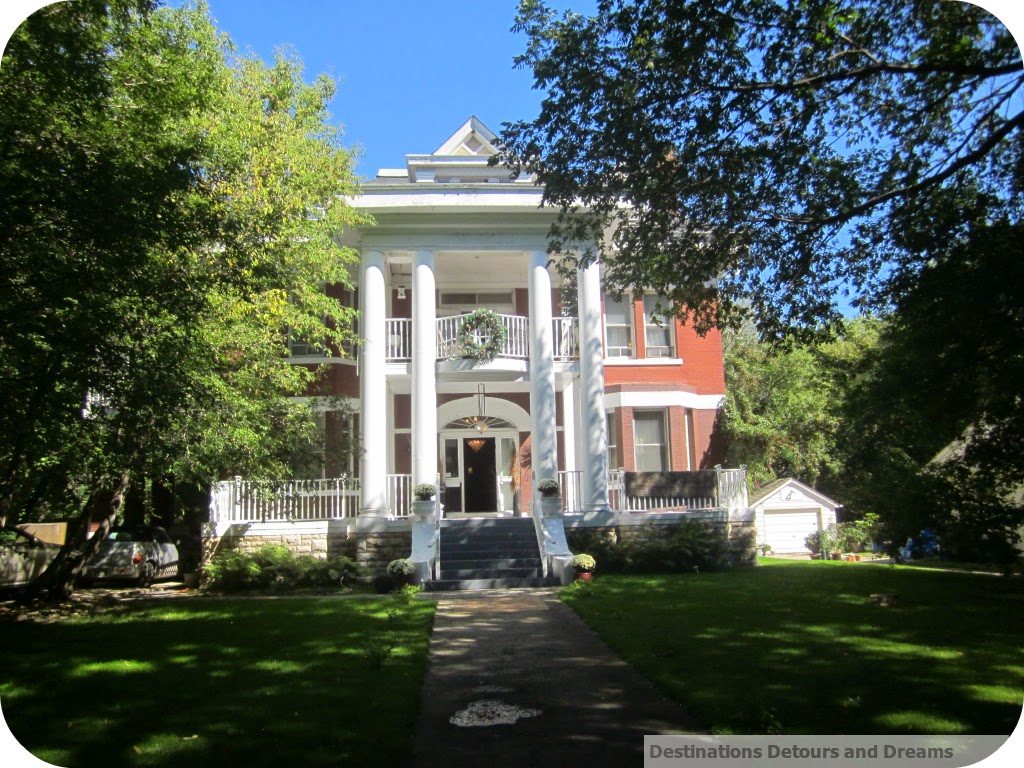
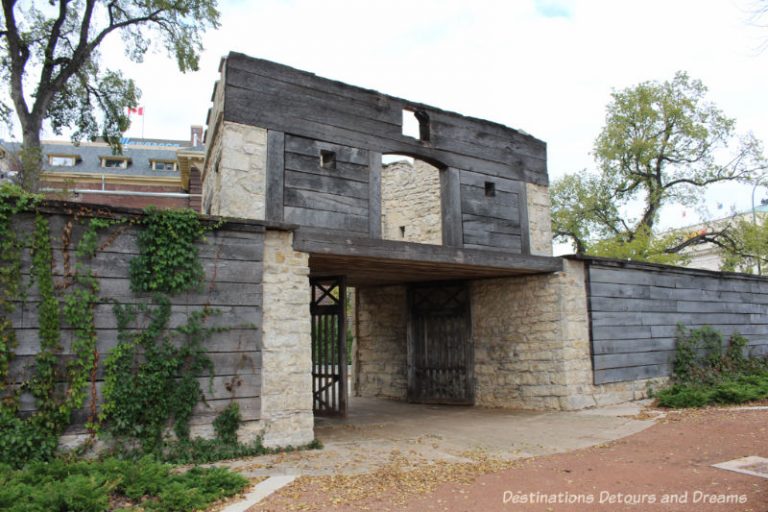
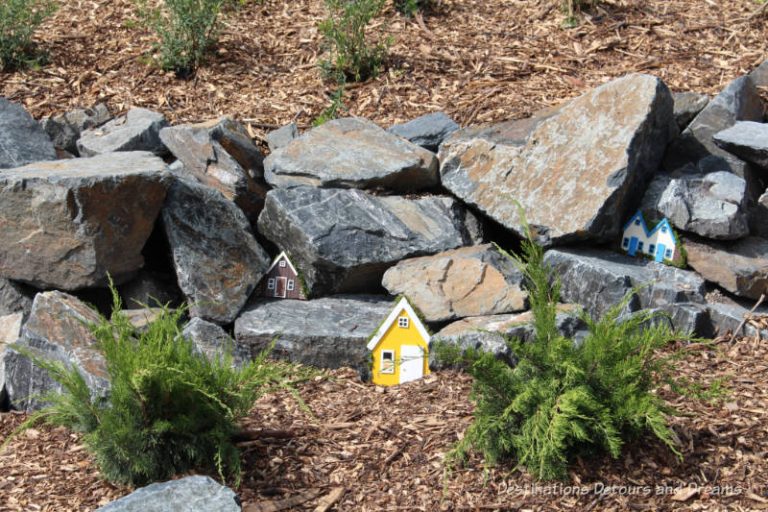
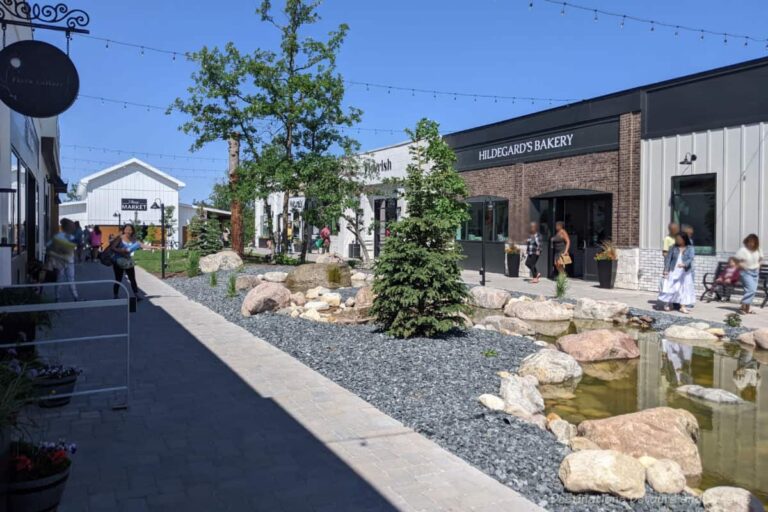

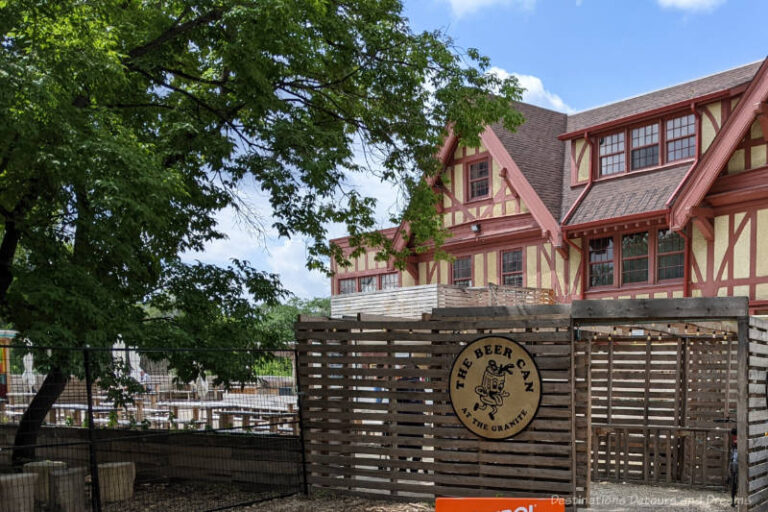

Awesome post, Donna! I’ve never heard of “Armstrong Point” and I was born and raised in Winnipeg! I’m glad they’ve formed an association to help preserve these homes, and that they have rec’d a special designation to protect them. How did you find out about the association?
Doreen, you may have heard of East Gate and West Gate streets near the Misericordia Hospital. That is the Armstrong’s Point area. A friend came across something in the paper or online (I’m not sure where) about the tour and let me know about it. I really enjoyed it. I was amazed at how much energy the owners put into their homes.
I see a future for restoration and maintaining these beautiful homes to becoming Bed & Breakfast homes. When these projects require so much daily maintenance, it’s fortunate there are people taking on these wonderful projects. The antique cars really give that look of time standing still.
Yes it is quite amazing that people have taken on these projects. The antique cars on the drives were a nice touch.
Great commentary, Donna. I’ve only ever driven by these houses and it’s nice to see your photos of the insides.
Glad you enjoyed a brief glimpse of the insides.
What a lovely set of houses you toured! These house tours always interest me, but I haven’t been on one in a while. As per your question, one of my favorite heritage houses is the Haas-Lilienthal House in San Francisco, http://berkeleyandbeyond.com/Northern-California/San-Francisco/Attractions/Historical-Sites/historical-houses/historical-houses.html
It was indeed a lovely set of houses, Carole. I’ll remember Haas-Lilienthal House next time I’m in San Francisco.
I love old houses with their histories and the stories of the families who have lived in them. The homes you have showcased in this post are all beauties and have me wistfully wondering what it would be like to live in one of these beauties. However, based upon the owner’s comments of future projects and planned renovations, I’m afraid the house would end up owning us rather than the other way around!
The house and its restoration certainly was a passion of these home owners and I think you’d need to have that kind of passion to take these houses on. I know the projects involved are not things my husband and I would enjoy tackling, but I enjoyed seeing the amazing things these home owners had done.
What a great tour, especially like the cars.
Thanks.
Wow! Everything about the houses echoes beauty.
It’s really obvious that you had a great tour, Ann.
These houses are so beautiful! I’ve visited the Biltmore which I loved. I would love to visit other old houses and learn their history.
Thanks Michele. I will have to see the Biltmore some day.
I’ve done my fair share of renovations and can relate to the person who after 17 years said the house would never be done. I love house – and garden tours – so fun to see what happened in Winnipeg at the turn of the century.
I too love house and garden tours. I haven’t undertaken any kind of major renovation and not sure I could live with the feeling of never being done.
I’m loving the vintage cars, too. It’s so wonderful that these houses found human lovers, as these restorations can only be done with emotion and heart. My favorite: The Columns.
It would be fun to stay a weekend at The Columns with a group of friends. The owner said they often get people staying for small reunions.
So nice that these homes have been so lovingly preserved!
The work was definitely a labour of love.